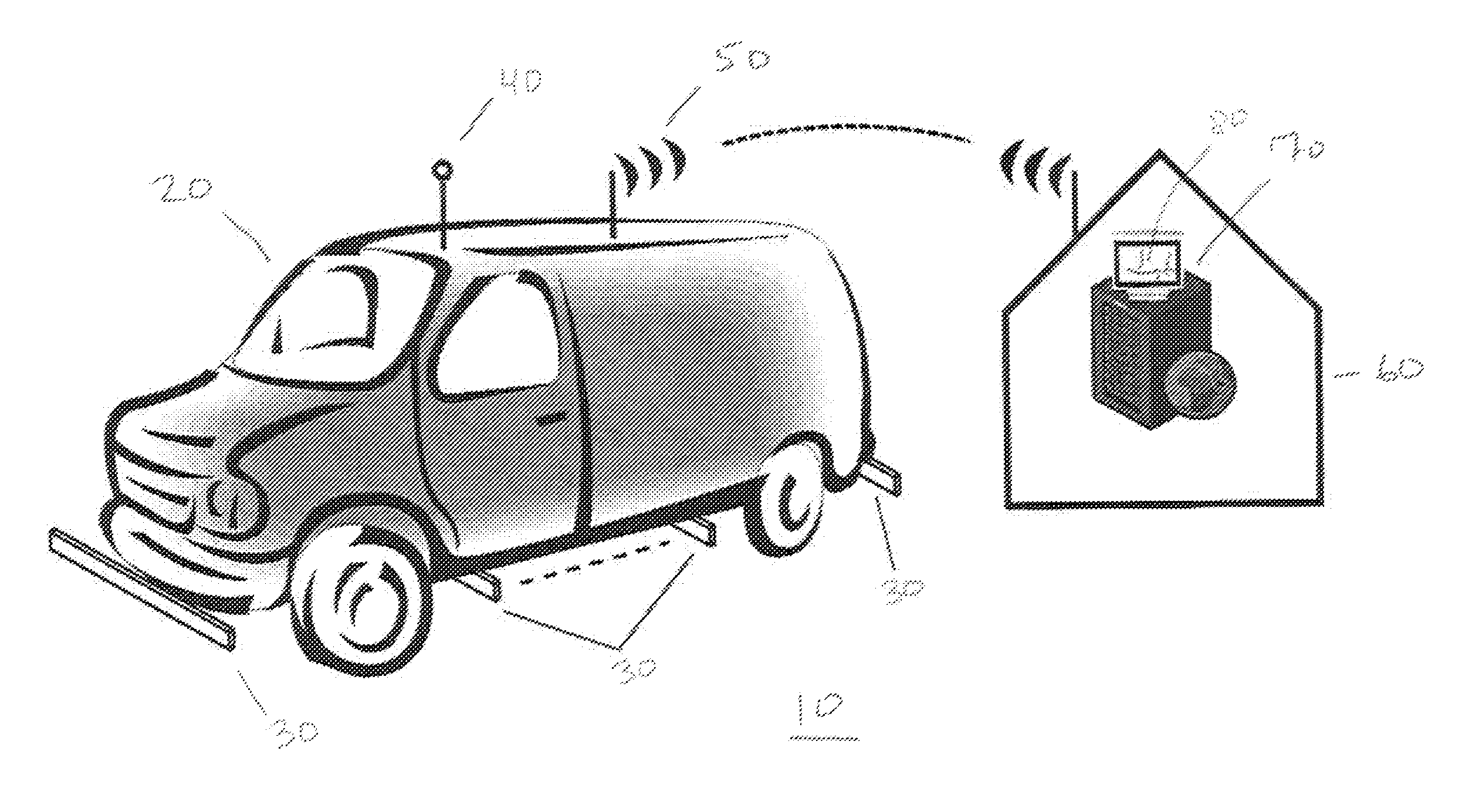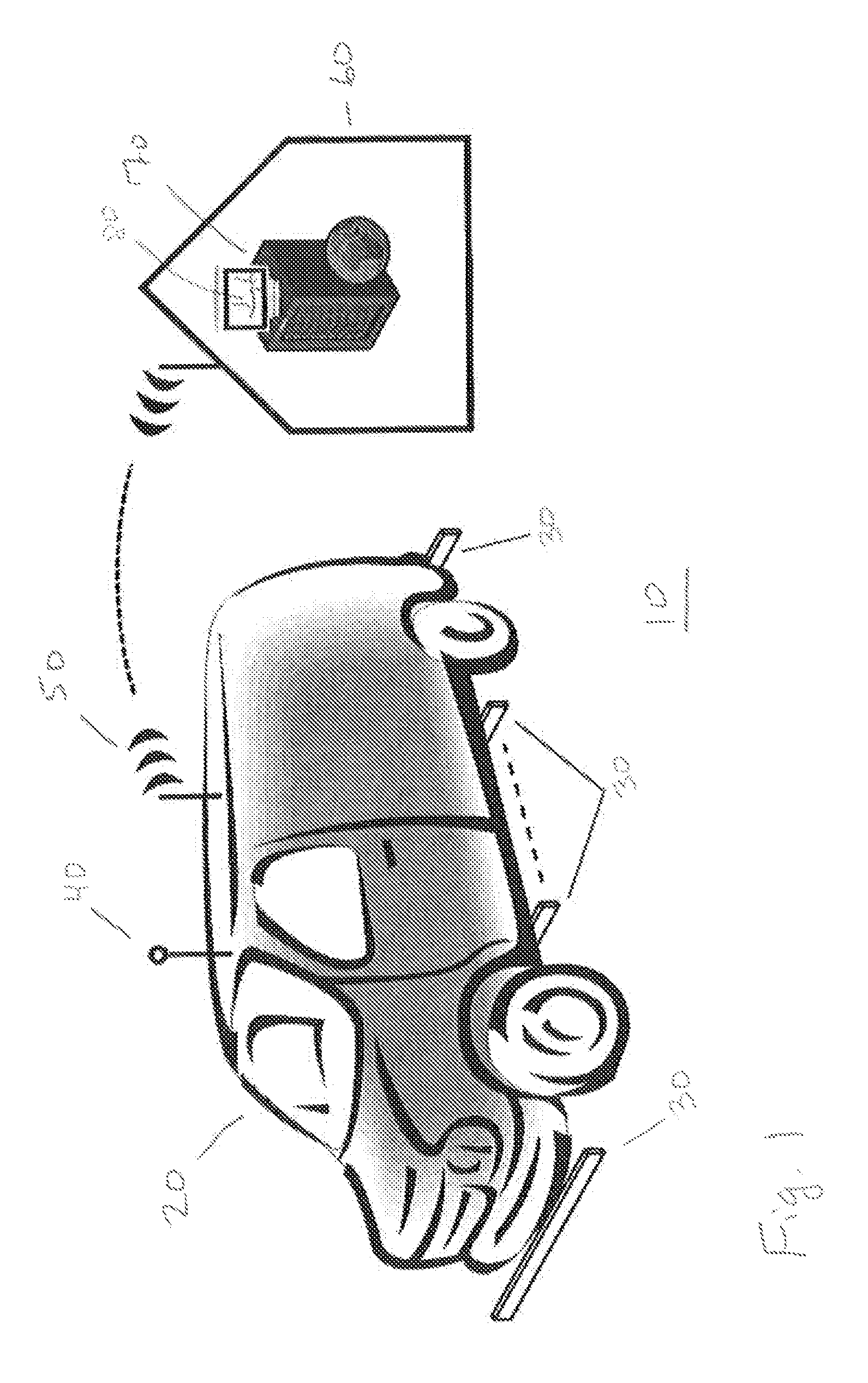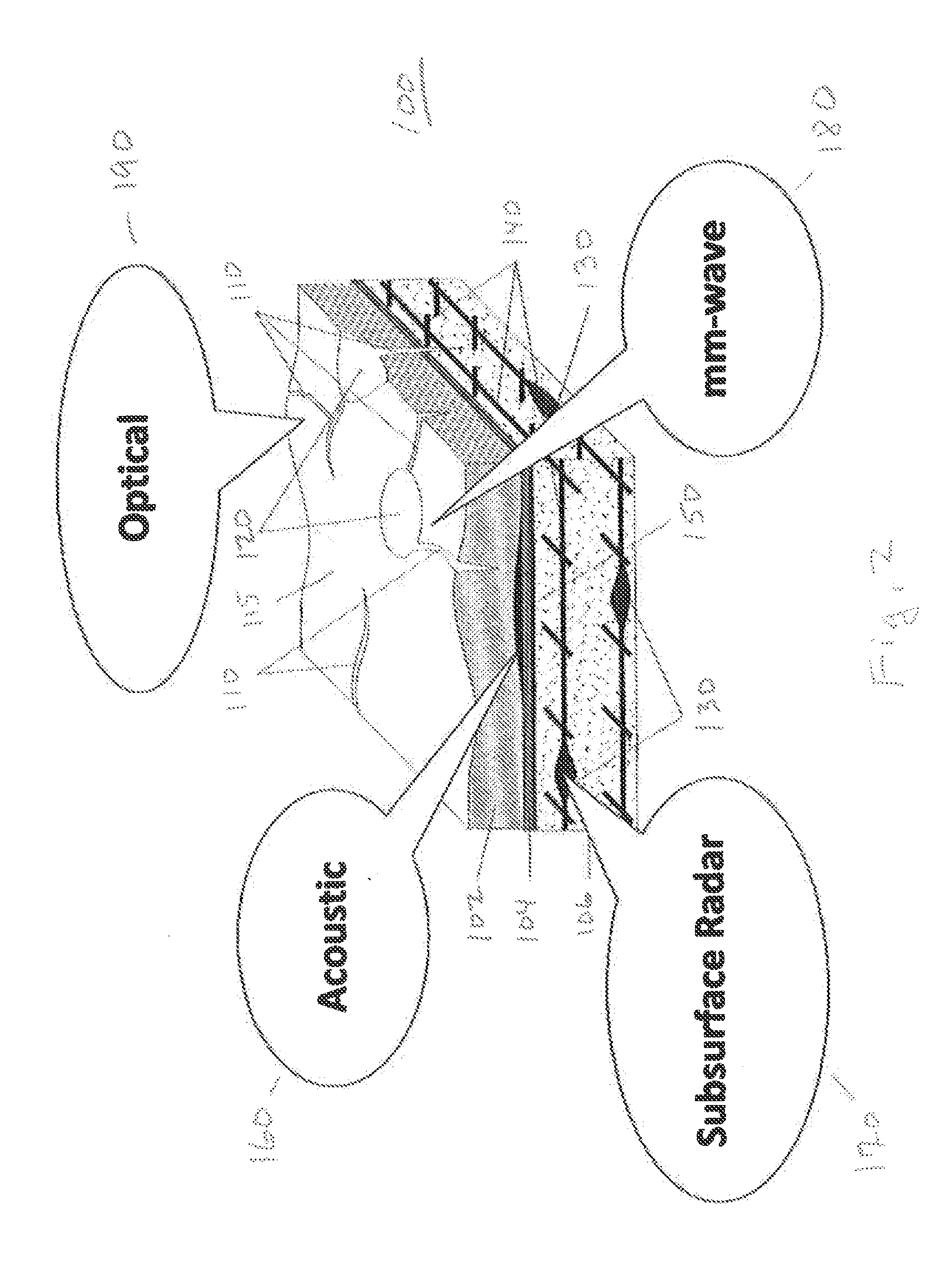Roaming Mobile Sensor Platform For Collecting Geo-Referenced Data and Creating Thematic Maps
a sensor platform and mobile technology, applied in the field of mobile sensor platforms, can solve the problems of frequent bridge deck and pavement deterioration, scarce benefit of civil infrastructure from the latest advances in sensor technology, and low efficiency of civil infrastructur
- Summary
- Abstract
- Description
- Claims
- Application Information
AI Technical Summary
Benefits of technology
Problems solved by technology
Method used
Image
Examples
example 1
[0049]A delivery van was outfitted with a positioning system consisting of two GPS positioning systems, one with centimeter resolution and the other with meter resolution, an inertial navigation systems (INS) with 6 degrees of freedom, and a distance measurement instrument (DMI) in the form of a wheel-mounted survey / trigger wheel. Positioning system data streams from those four instruments were recorded by either a dedicated computer or a main controller, both installed in the van. An additional component of the positioning system was an accurate time stamping signal provided by a GPS-based timing board, which was used to correlate each of the data streams with the others for processing. All of the positioning data streams were processed by a custom algorithm to output the most accurate position based on the available data.
[0050]FIG. 4 shows an output obtained from the system. The van was driven around the National Center for Asphalt Technology (NCAT) test trac...
example 2
Acoustic Surface and Subsurface Sensing System
[0051]A surface wave-based sensor was developed to monitor and interpret road and bridge deck acoustic responses at ordinary driving speeds. The system was termed the Tire Excited Acoustic Sensor system (TEAS). A schematic of the system is shown in FIG. 5A. The sensor system uses acoustic noise signals generated by tires 22 of the roaming sensor system vehicle 20 during normal driving to distinguish defects in asphalt overlay and concrete roadbed, focusing on the early detection of poor bonding between asphalt and concrete deck, and extensive cracking. The objective was to measure acoustic waves generated by the system vehicle's own tires during normal driving and to extract the condition of the asphalt pavement on the road and the condition of the concrete deck beneath it.
[0052]In this sensor system the tire is used as a mechanical source. Each tire transmits approximately one quarter of the vehicle weight to the road surface, which mec...
example 3
Air-Coupled Ground Penetrating Radar (GPR) Array
[0058]A GPR array was designed to rapidly and automatically sense subsurface anomalies in roadways and bridge decks indicative of deterioration. Such anomalies would otherwise be invisible from a surface inspection of the road surface (FIG. 2). The fundamentals of GPR array technology to map the subsurface for many applications including utility mapping and roadway and bridge deck layer mapping and imaging is documented elsewhere (see, e.g., Slob, E., Sato, M., and Olhoeft, G., 2010, Surface and borehole ground-penetrating-radar developments: Geophysics, Vol. 75, p. 75A103-75A120; and Birken, R., Miller, D., Burns, M., Albats, P., Casadonte, R., Deming, R., DeRubeis, T., Hansen, T. and Oristaglio, M., 2002. Efficient large-scale underground utility mapping in New York City using a multi-channel ground-penetrating imaging radar system, Proc. SPIE, Vol. 4758, pp. 186-191). However, commercially available GPR array systems are not able to...
PUM
 Login to View More
Login to View More Abstract
Description
Claims
Application Information
 Login to View More
Login to View More - R&D
- Intellectual Property
- Life Sciences
- Materials
- Tech Scout
- Unparalleled Data Quality
- Higher Quality Content
- 60% Fewer Hallucinations
Browse by: Latest US Patents, China's latest patents, Technical Efficacy Thesaurus, Application Domain, Technology Topic, Popular Technical Reports.
© 2025 PatSnap. All rights reserved.Legal|Privacy policy|Modern Slavery Act Transparency Statement|Sitemap|About US| Contact US: help@patsnap.com



